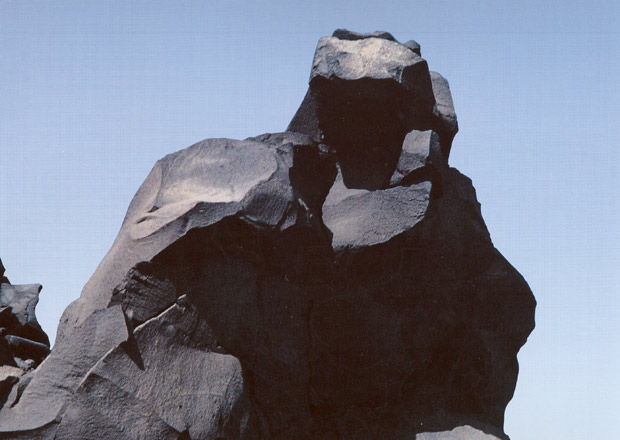Volcanic eruptions in the 19th century AD
A series of eruptions took place on Nea Kameni during the period 1866-1870. According to the watchman who lived in Nea Kameni, big rocks come off and rolled from the volcano sides on January 1866. Fents appeared on the walls of his house and the volcanic activity signs grew more in the next days. The sea bubbled and sulphide gases spurted from it. Some days later, smoke and dark rocks appeared on the surface of Vulcano cove. They were lava pieces that had been solidified and rolled far from the eruption core.

Nea Kameni lava rock
The lava masses were spread towards Nea Kameni settlement and buried the houses that had been built close to the small port. This volcanic area was named Georgios, after the King of Greece who was on the throne during that period. A strong eruption occurred in late February of the same year (1866) which was followed by ash explosion. The volcanic activity was interrupted by short period of activity during the next months.
A new eruption on next May created a lava islands complex named as the islands of May, which were subsidenced in a low depth. Less strong eruptions used to occur by 1870. The volcano woke up again during the 20th century.
Volcanic eruptions in the 19th century AD
The eruptions that occurred in the 20th century have been recorded in detail and the volcanic activity has been examined by scientists who were in Santorini island in order to watch that phenomenon. The first of them began in August 1925. The pre-eruption signs included high sea water temperature at Kokkina Nera cove and subsidence of the eastern coast of Nea Kameni and a few seconds later steams spurted, geysers appeared and the first lava effusion began. Continuously, the volcanic cone was formed from where lava was effused and then a pyroclastic column was erupted, which was 3.2 kilometers tall. The volcano was active for 6 months with several effusion phases and eruptions and after a silent period, four new eruptions occurred in 1928.
The next period of volcanic eruptions lasted from 1939 until 1941 with various eruptions and lava effusions. The eruption points, the lavas etc were named after volcanologists and geologists who had investigated that area.
The volcanic activity of 1959 consisted of phreatic eruptions and thick lava effusions. One of the domes collapsed leaving behind a funnel-shaped area and this must have happened during an eruption in Nea Kameni where the volcanic activity have not been completed yet. The size of Nea Kameni island has been growing very much for the last four centuries.
